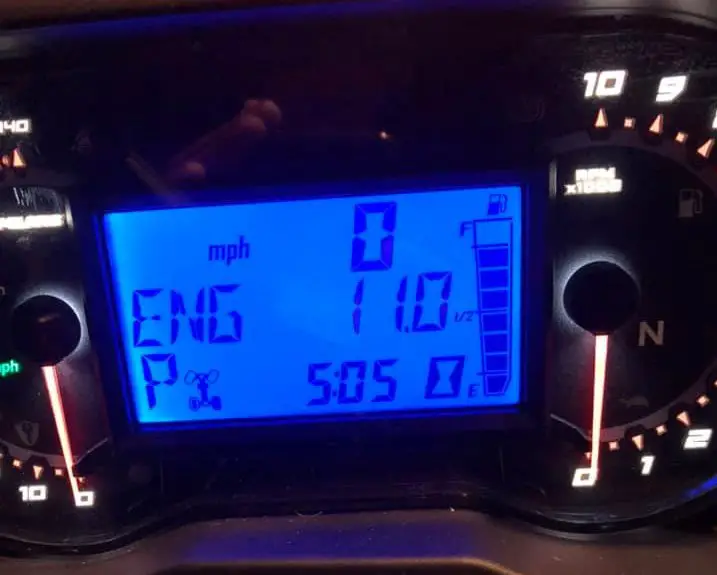You’ve probably heard of or seen the “check engine” light on your car. But what is it, exactly? And how does it help you drive safer?
The check engine light is an indicator that detects whether or not there’s something wrong with one of your vehicle’s systems.
For example, if your Polaris Ranger has a check engine light, it means there may be an issue with its performance. Several different codes may appear when you have this light on your vehicle.
Each code represents a specific problem that needs to be addressed by a repair shop as soon as possible to avoid severe consequences for the safety and performance of your vehicle.
In this article, we’ll discuss Polaris Ranger TPS symptoms, what the check engine light indicates on your Polaris Ranger, standard TPS codes and their meanings, and how these issues can affect the performance of your machine.
What Is a Throttle Position Sensor?
The throttle position sensor (TPS) is a part of your vehicle’s engine control computer that monitors the throttle position of your vehicle. It acts as a “go-between” that translates information between the engine computer and your throttle pedal while driving the car.
Without a throttle position sensor, your car wouldn’t know how far the throttle is open; therefore, it wouldn’t be able to control its fuel intake and air intake. This would cause the engine to run improperly, and it might even stall.
In order for your vehicle to run well and safely, the throttle position sensor needs to be in proper working order. The TPS measures the amount of angle at which the throttle is open and transmits this information to the computer.
Related: Do Side by Sides Have Titles?
Polaris Ranger TPS Symptoms
If you have a check engine light on your vehicle, you should pay special attention to the code it shows. The code will tell you exactly which system is malfunctioning.
For example, if your check engine light is accompanied by a TPS code, this means that there is a problem with your throttle position sensor.
Suppose your Polaris Ranger TPS isn’t functioning correctly. In that case, it may cause your vehicle to experience poor acceleration and/or idle, stumble/hesitation while driving, and difficulty maintaining speed while driving on flat road surfaces.
Related: Top Speed of A Polaris Ranger
Can I Replace My Throttle Position Sensor At Home?
With minimal tools, it is possible to do this at home. Just look up a how-to video. You can find almost anything online nowadays. Let the engine cool off before attempting the repair is a good idea. So that you don’t burn or hurt yourself.
Replacing a throttle position sensor is a job left up to a trained mechanic. The sensor is susceptible, and cleaning it thoroughly after removing it from the Ranger is essential.
The slightest bit of dirt or dust may cause the check engine light to stay on or come on frequently. Consult your owner’s manual to find out where the sensor is located. Take it to a mechanic to have it replaced.
Common Polaris Ranger TPS Codes

Here are the most common, if not the only, codes on Polaris Ranger on the TPS:
- P0122 22 TPS: Open or Short Circuit to Ground. This code will show up if the voltage signal gets too low (below 0.7 volts) from the TPS to the ECU.
- P0123 22 TPS: Short Circuit to Battery. This code will appear if the voltage signal from the TPS gets too high (above 4.61 volts). This can happen as a result of damaged wiring or a faulty sensor.
- P0120 TPS: TPS Unrealistic Transition. This code indicates that the signal from the TPS is intermittent and changing rapidly. This can be caused by damaged wiring or a faulty sensor again.
FAQs
What happens when you unplug the throttle position sensor?
Your engine will start to idle rough and cut out as soon as you hit the throttle.
How do you adjust the TPS on a Polaris Ranger?
Find the adjustment screw on the TPS. You can use needle nose pliers to turn the screw. To do it correctly, you should connect a voltage meter to the yellow wire and the ground. Then, turn the ignition on, but don’t start when checking the voltage. The ideal reading is 0.660 volts.
Can you drive without a TPS sensor?
You can Idle, so driving is not going to happen. At most, you could coast it with no throttle.
Conclusion
No one likes to think about their vehicle having mechanical issues, but it’s essential to be aware of the symptoms of various problems. If your check engine light is on, reading the code will tell you exactly which problem is causing the issue.
Once you know what’s wrong, you can take your vehicle to a repair shop to have it fixed as soon as possible. Having your vehicle fixed as quickly as possible will help prevent further damage and improve the overall performance of your vehicle.




